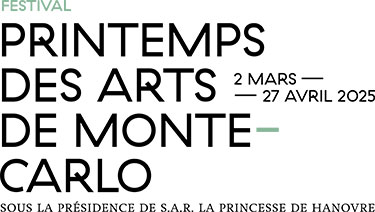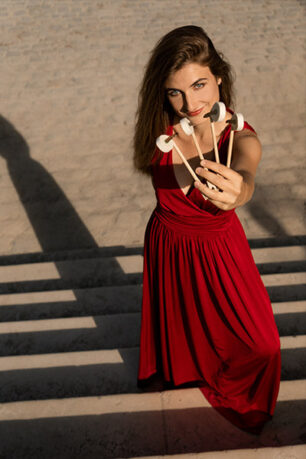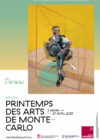Sight doesn’t know itself
before it has travelled and
met a mirror in which it can
discover itself.
(Jules César, Act I, Scene 2)
Ravel quoting Shakespeare about his Miroirs
(Esquisse autobiographique, 1928)
Brahms, Rihm, Boulez, Ravel. With the exception of the instrument, the titles (Klavierstücke), the geographical spheres and an alternation of B and R capital letters, at first glance little seems to connect the composers in a programme which stresses historical and aesthetic contrasts. However, Wolfgang Rihm’s catalog reveals subtle links with the music of the past, particularly from nineteenth century Germany and Austria (Schubert, Schumann, Brahms). Opuses by Pierre Boulez and Maurice Ravel, for their part, are united by the idea of a work in progress that brings the piano to the edge of the large orchestra.
FROM BRAHMS TO RIHM…
Although he has not written for solo piano since his Two Rhapsodies Op. 79 (1879), Johannes Brahms returns to his training instrument in the summer of 1892, during a stay at the Austrian spa town of Bad Ischl. A year later (in the same place), he sets to work on his Op. 118 and 119, the testament to his ultimate piano output. The three intermezzi and the rhapsody, grouped together in 119, are to be heard as “monologues” (Hanslick) that the composer holds for himself in an expressive spectrum ranging from affliction to jubilation. The first, in B minor, which Clara Schumann described as “softly sad in spite of the dissonances”, sets a tenderly melancholy mood that is matched by the restlessness of the second and the light, almost Schubertian inflections of the third. The concluding rhapsody in E-flat major, which is best understood as a ballad, unfolds with a brilliant (almost heroic) character, reminiscent of the composer’s orchestral pages.
Labeled a “New Romantic” in the early 1970s (when Klavierstück No. 1 was composed), Wolfgang Rihm claims to draw on multiple influences, old and new, referring more or less closely to works in the repertoire without sliding into the mere quotation. For this composer, who claims a form of anarchy in art, the idea is to give it your all, summoning up romanticism, expressionist intensity, the figures of Lachenmann, Boulez, Stockhausen, Varèse, etc. His Op. 8a is arranged in seven sections (most often linked by resonance) with variations in tempo from adagio to sehr schnell (very fast). While certain pianistic, harmonic and expressive features may sound like distant echoes of late Romanticism, the pianistic writing brings us closer to Stockhausen’s Klavierstücke corpus. Dionysian and eruptive, this music oscillates between the subtle study of resonance and the exploitation of the piano’s hyper-percussiveness.
… AND FROM RAVEL TO BOULEZ
With Les Miroirs (1904-1906), each piece of which is dedicated to a member of the art-lovers’ circle ”Les Apaches”, we plunge into the artistic and musical ferment of turn-of-the-century Paris. While it is tempting to see in these pieces a musical transposition of pictorial Impressionism, Ravel is more measured, speaking of a “fleeting analogy”. Between soundscapes (which philosopher Vladimir Jankélévitch described as “a kind of entomological rhapsody”) and Spanish figures (Alborada del gracioso), the collection sharpens perception through refined piano writing which brings shimmering touches to the orchestra. This is how the hypnotic movement of Une barque sur l’océan and the guitar writing of Alborada del gracioso came to orchestral life in 1906 and 1919.
Twelve short pieces of twelve bars, built on the same series of twelve pitches (dodecaphonic): forty years after Les Miroirs, this is the general framework of Pierre Boulez’s Notations. 1945. The 20-year-old composer still is a student in Olivier Messiaen’s harmony class and René Leibowitz’s private lessons. Yet, this is by no means a simple scholastic exercise, since these Notations would follow Pierre Boulez right up to the early 2000s. The supposed rigidity of twelve-tone material here yields an infinite wealth of pianistic gestures and melodic, ornamental and rhythmic figures. At times, one can even detect a few “reflexes” of traditional harmony. “Whimsical”, “improvised”, “hieratic”: the agogic indications specified by the composer suggest a fertile balance between rigorous formalisation and freedom of the ear – or how to “formalise delirium”, in the words of composer François Meïmoun. The material of Notations has been re-used in a variety of contexts: a radio piece in 1957, a commentary on the Première Improvisation sur Mallarmé in 1958 – all of them preludes to more systematic orchestration work in the late 1970s, in a kind of echo to the Ravelian Miroirs.
Nicolas Munck



